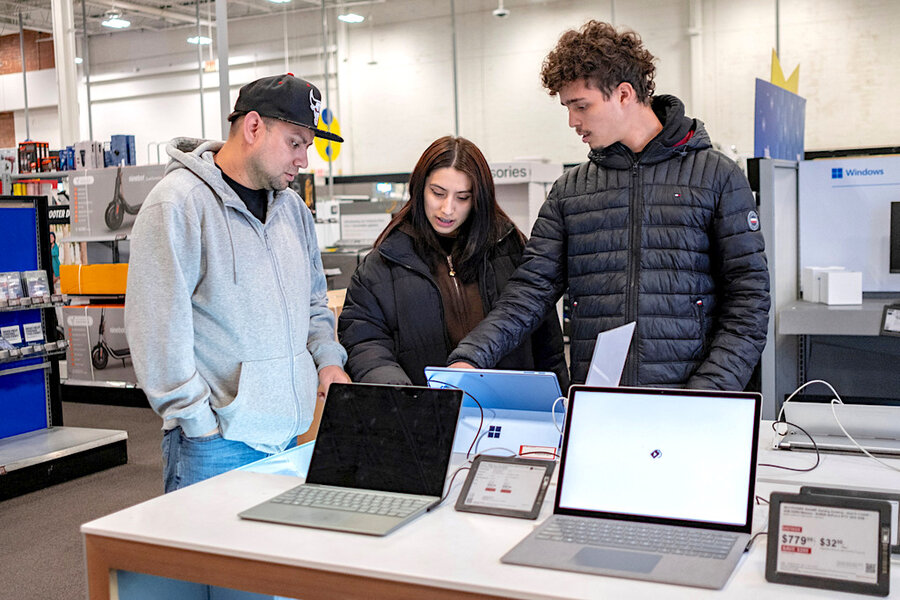The panic that wasn’t
Loading...
The preface for much of the conversation about central banks this year has been how they misread the cues for inflation, and that allowed prices to run away.
One of the most important stories of the year, however, is the absence of consumer panic amid the worst inflation in half a century. Stock markets have bounced up and down. But wages and prices – as barometers of attitudes among shoppers and shopkeepers alike – have not chased each other into a frenzied upward spiral.
That calm is likely rooted in a moral explanation. Confronted by soaring inflation, the world’s monetary policymakers have responded with aggressive interest rate hikes – seven this year in the United States alone. Yet arguably their most effective tool has been honesty. “I wish there were a completely painless way to restore price stability,” Federal Reserve Chair Jerome Powell said Wednesday. “There isn’t.”
“Central banks have become increasingly open about their ... objectives, strategy, economic models and projections, and policy deliberations,” according to a study published in April by the European Money and Finance Forum, known by its French acronym SUERF. “Transparency enables accountability, which lends legitimacy to independent central banks and further enhances their credibility.”
That openness has enabled business owners and individuals to shape their own financial decisions with more certainty, resulting in wisdom, patience, and even compassion. Across the United States, for example, there have been countless examples of small-business owners making small adjustments to avoid passing on higher business costs to consumers through higher prices.
“Before I spent more time out in the dining room,” Wayne Shumar, a restaurant owner in Brownsville, Pennsylvania, told Fortune recently. “That’s what a family restaurant entails. Now I spend more time sitting here, looking at a computer screen, trying to keep costs down.”
A survey of consumer behavior by the University of Michigan in November found that, while “inflation has clearly inflicted much pain on the personal finances of consumers,” their long-run expectations about inflation have not dramatically changed this year despite a peak rate of 9.1% in June. A key reason is clarity. “Their views are informed not only by their own experiences but also by their observations and impressions of the economic environment around them, including news they encounter,” the survey found.
“Democracy,” the Supreme Court noted in its 2003 decision in McConnell v. Federal Election Commission, “is premised on responsiveness.” Strong institutions result in stability. That may be why a year of soaring inflation has not resulted in panic. From the United States to Japan, the transparency of central bankers has been a source of reassurance for consumers.







